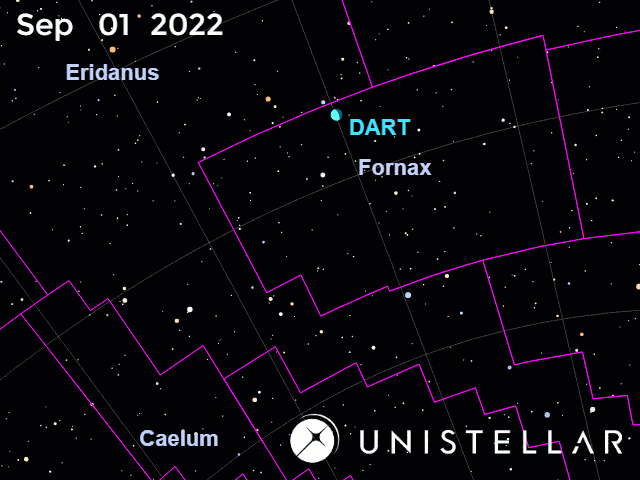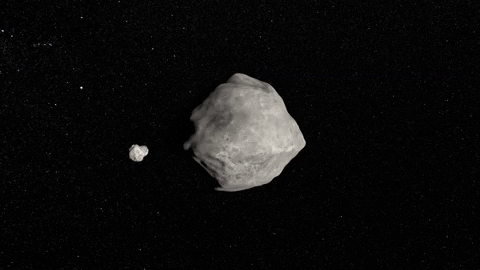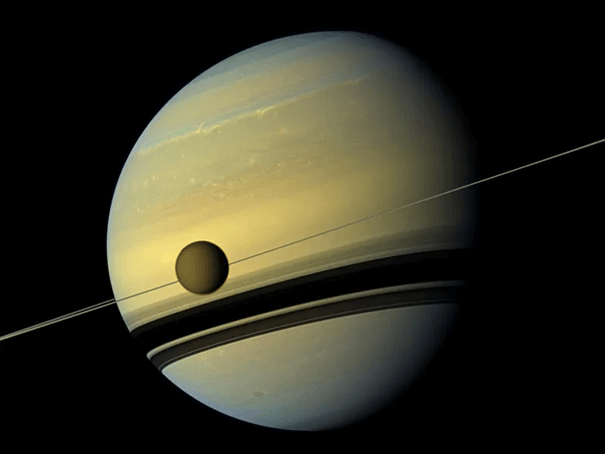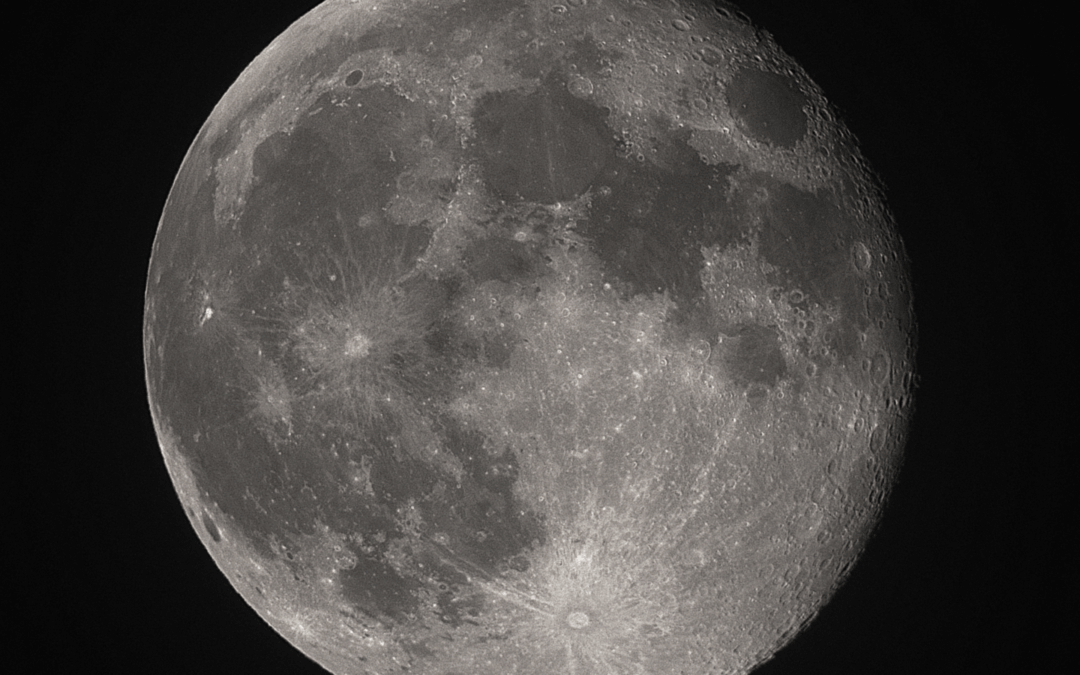On September 26, NASA will crash a spacecraft into an asteroid to test humanity’s ability to defend itself against a potential impact. It’s a big moment for Planetary Defense preparations to save the Earth from incoming asteroids, and Citizen Astronomers will have a chance to watch it happen live. The DART mission’s thrilling conclusion will be visible from multiple parts of the Earth, and by gathering observations of the event, we can contribute important data that scientists can use to better understand how the test went.
The Double Asteroid Redirection Test (DART) mission is testing whether we can alter the orbit of an asteroid by hitting it with a fast-moving spacecraft. Such a maneuver could one day be necessary to save the planet, should a hazardous Near-Earth Asteroid be spotted on a collision course with Earth. The DART mission is testing the technique on the binary asteroid Didymos by flying a craft into its moon Dimorphos and then watching to see how the asteroid’s course changes.

NASA scientists are looking for extra observations of the asteroid before, during and after the test.
Before the event: Citizen Astronomers can help verify Dimorphos’ current orbit and get a baseline for our observations by watching it transit, or pass in front of, Didymos. This causes a drop in brightness that will be visible if multiple Unistellar telescopes are looking at the asteroid Didymos simultaneously. So, we need all of the observers that we can get! Unistellar observers across the world can observe these pre-impact transits at a few different times:
Japan: September 24, from 18:15 to 19:30 UTC
Namibia: September 24 from 18:15 to 19:30 UTC
Oceania: September 24 from 06:21 to 07:35 UTC
South America: September 24 from 06:21 to 07:35 UTC
During the event: Citizen Astronomers in Africa (east of Ghana), South Asia, Southeast Asia and the Middle East, can observe Didymos and Dimorphos on September 26 from 22:50 to 23:59 UTC. The DART mission’s impact is expected to happen around 23:14:34 UTC, plus or minus about 15 minutes. We expect to detect a flare of brightness at the moment of impact, but because this is the first time anyone has tried to deflect an asteroid, we’re not quite sure what we’ll see! We need your observations to find out. Click on this DEEP LINK from your smartphone to prepare for this mission at 23h00 UTC.
After the event: A transit by Dimorphos after DART’s impact will show whether and by how much the asteroid’s new orbit differs from scientists’ predictions. There is a transit expected to occur after the DART test which will be visible only to the Southern Hemisphere and Japan, where Citizen Astronomers can observe the predicted transit on September 27 from 17:40 UTC to 18:55 UTC. Observations of this transit will be extremely important to researchers, because they will show whether Dimorphos’ orbit has changed according to plan. Data from these observations will be shared with astronomers at the Observatory of Nice and the European Space Agency.

Credit: NASA
How to Observe Didymos and Dimorphos with your Unistellar telescope:
Didymos is in the Unistellar App, so it’s easy to observe. You’ll be using the Unistellar app’s science mode, which can be found under the Planetary Defense tab.
First, follow the HowTo guide for A. The Planetary Defense target is in the Unistellar app’s database.
In the Recording field enter the following information:
During the impact :
– Exposure time: 1000 ms / Gain: 30 dB / Duration: Two observations of 20 minutes each
After the impact :
– Exposure time: 3971 ms / Gain: 30 dB / Duration: Two observations of 40 minutes each
You can find more information on how to observe a near-Earth asteroid on our Planetary Defense Campaign page.

Further readings
Titan’s shadows
Every month, discover three unmissable celestial events to observe with your Unistellar telescope.
3 Reasons to observe this month
Every month, discover three unmissable celestial events to observe with your Unistellar telescope.
Observing Eclipses on Jupiter: Cosmic Spectacles Through a Telescope
The latest Unistellar App Update, version V3.0, is now live. Explore a smooth stargazing experience !
Unistellar Community Included In Multiple Scientific Papers
Did you know Unistellar Citizen Astronomers are often cited in published scientific papers? Find out how you can contribute too!
What Are the Names of All the Full Moons in 2024?
Discover the enchanting names of the full moons in 2024. Delve into the unique character of each lunar spectacle and embrace the allure of the night sky.
New Unistellar App Update: Version 3.0
The latest Unistellar App Update, version V3.0, is now live. Explore a smooth stargazing experience !






